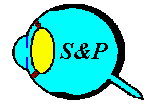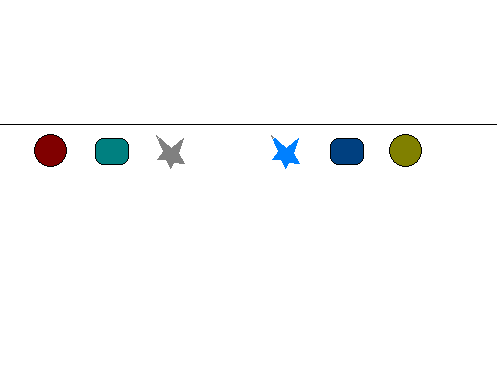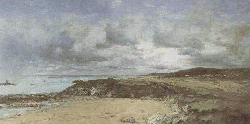

Another pictorial cue to depth is the relative height of objects in the painting. To understand relative height, think of the horizon dividing the world into two roughly equal portions of the world, the ground below and the sky above. Since both halves have a lot to see, the horizon cannot be placed at the bottom of a picture, which would give little room to paint the ground, or at the top, which would give little room to paint the sky. Instead the horizon is usually somewhere near the middle in western perspective painting. Given where the horizon is painted, the distant part of sky is painted near the middle of the picture that is near where the sky and ground meet at the horizon. The part of the ground and sky near the viewpoint of the painter then occurs at the extremes of the painting, the close part of the ground near the bottom and the close part of the sky near the top of the painting.
 Objects on the ground have to be painted on
the ground and, thus, ever higher as they are depicted farther away in depth. An object
close to your, the viewer's, feet will be at the bottom of the painting and a object off
in the distance is near the middle of the painting.
Objects on the ground have to be painted on
the ground and, thus, ever higher as they are depicted farther away in depth. An object
close to your, the viewer's, feet will be at the bottom of the painting and a object off
in the distance is near the middle of the painting.
Examine the illustration to the left. It starts with six object at the same level of the illustration and they look at the same distance. Then the move; three go above the horizon line and three below the horizon line. At the end the two star-like objects are nearest to the horizon line and look the farthest away. The two circles are farthest from the horizon line and appear nearest.
This cue can lead to a powerful sense of depth as seen in this landscape by Eugene Boudin called "The Coast of Protrieux". The coast near you is at the bottom of the page and as it recedes in distance it gets ever higher. As there are not any objects, nor any interposition, nor any real strong texture, the primary cues to depth being used in this picture is relative height.
 The Coast of Portrieux by Eugene Boudin
The Coast of Portrieux by Eugene Boudin
When the object is in the sky, like the clouds in "The Coast of Portrieux" above, then the effects of relative height are reversed. Here lower indicates farther away.
The general rule is that the closer to the level of the horizon, usually near the middle, the farther away the object appears.